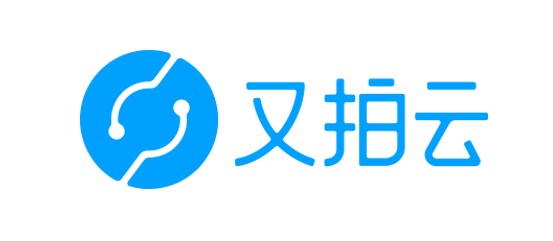GET 请求也能传递 Body 数据
通常而言, GET 请求很少传递 Body 数据, 大多情况下都是放在 url 中, 例如
1
| http://example.com/api?key1=value1&key2=value2
|
但是这样做,
- 可能由于 传递数据过多 导致 URL 过程而被拦截。
- 运营商会缓存 URL 地址以达到加速的效果, 而有些参数又不想被缓存。
- 等等
虽然, 可以使用 POST 请求代替 GET 请求, 在 Body 中传递数据, 但是这样做可能会破坏 RESTful 风格的 API 格式。
在标准协议中, GET 请求是可以携带 Body 数据的, 这些数据是否被处理, 全看 接收端(后端) 的行为。大多数情况下, 大家都选择放弃。
例如 而 gin-gonic/gin 框架在处理 GET 请求的时候, 就选择忽略了 Body 数据。
gin 在选择默认解释器的时候, 发现如果是 GET 请求, 无论 Content-Type 是什么, 都是使用 表单 Form 解释器。
以下代码基于当前最新的 [email protected]
gin - binding/binding.go#L90
1
2
3
4
5
6
7
8
9
10
11
12
13
14
15
16
17
18
19
20
21
22
23
24
25
26
27
28
29
30
| var (
JSON = jsonBinding{}
XML = xmlBinding{}
Form = formBinding{}
Query = queryBinding{}
FormPost = formPostBinding{}
FormMultipart = formMultipartBinding{}
ProtoBuf = protobufBinding{}
MsgPack = msgpackBinding{}
YAML = yamlBinding{}
Uri = uriBinding{}
Header = headerBinding{}
)
// Default returns the appropriate Binding instance based on the HTTP method
// and the content type.
func Default(method, contentType string) Binding {
// 如果是是 GET 请求, 直接使用 Form 表单方式处理数据
if method == http.MethodGet {
return Form
}
switch contentType {
case MIMEJSON:
return JSON
case MIMEXML, MIMEXML2:
return XML
// ...
}
}
|
gin - binding/form.go#L21
1
2
3
4
5
6
7
8
9
10
| func (formPostBinding) Bind(req *http.Request, obj interface{}) error {
// 获取表单数据的时候, 使用 net/http 库的 req.ParseForm() 方法
if err := req.ParseForm(); err != nil {
return err
}
if err := mapForm(obj, req.PostForm); err != nil {
return err
}
return validate(obj)
}
|
在 golang 中默认的 net/http 库, 在处理 表单 form 数据的时候, 特定的 请求方法 GET/DELETE 就选择忽略 body 数据
golang(v1.16.5) , 代码如下
net/http request.go#L1251
1
2
3
4
5
6
7
8
9
10
11
12
13
14
15
16
17
18
19
20
21
22
23
24
25
26
27
28
29
30
31
| // ParseForm populates r.Form and r.PostForm.
//
// For all requests, ParseForm parses the raw query from the URL and updates
// r.Form.
//
// For POST, PUT, and PATCH requests, it also reads the request body, parses it
// as a form and puts the results into both r.PostForm and r.Form. Request body
// parameters take precedence over URL query string values in r.Form.
//
// If the request Body's size has not already been limited by MaxBytesReader,
// the size is capped at 10MB.
//
// For other HTTP methods, or when the Content-Type is not
// application/x-www-form-urlencoded, the request Body is not read, and
// r.PostForm is initialized to a non-nil, empty value.
//
// ParseMultipartForm calls ParseForm automatically.
// ParseForm is idempotent.
func (r *Request) ParseForm() error {
var err error
if r.PostForm == nil {
// 三个特定的请求方法, 选择读取 Body
if r.Method == "POST" || r.Method == "PUT" || r.Method == "PATCH" {
r.PostForm, err = parsePostForm(r)
}
// 其他方法, 选择从 URL 中获取。
if r.PostForm == nil {
r.PostForm = make(url.Values)
}
}
// ...
|
ginbinder v0.1.1
ginbinder 是对 gin 绑定数据方法的一个扩展库。
v0.1.1 的发布, 就实现了处理 GET 能获取 Body 数据的想法。
不过为了不违背 gin 和 golang net/http 原本的初衷, 在实现方式上有一个强制要求。 即对 body 结构体必须使用 mime tag 指定解释器。
1
2
3
4
5
6
7
8
9
10
| type Params struct {
Name string `uri:"name"`
Age int `query:"age,default=18"`
Money int32 `query:"money" binding:"required"`
Authorization string `cookie:"Authorization"`
UserAgent string `header:"User-Agent"`
Data struct {
Replicas *int32 `json:"replicas"`
} `body:"" mime:"json"` // 通过 mime 强制指定 json 解释器
}
|
除了 json 解释器之外, mime 还支持 yaml, xml 两种解释器。
1
2
3
4
5
6
7
8
9
10
11
12
13
|
// MimeBinding returns the appropriate Binding instance based on mime value in body tag
func MimeBinding(mime string) Binding {
switch mime {
case "json":
return JSON
case "xml":
return XML
case "yaml", "yml":
return YAML
}
return nil
}
|
详细用法和demo, 可以查看
https://github.com/tangx/ginbinder
。


